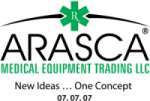What you need to know about Sodium
Sodium or table salt is an important part of almost every meal as it makes food tastier. Aside from this, the consumption of table salt also impacts the body’s optimal health as it contains iodine, which is an essential nutrient.
NOTE: Unprocessed sea salt does not contain iodine.
Aside from table salt, here are other sources of sodium:
- Processed foods
- Cheese, seafood, olives and some legumes
- sea salt and kosher salt (sodium chloride)
- Some over-the-counter drugs
- Some prescription medications
Based American Heart Association’s recommendation, sodium intake must only be 2,300 milligrams (mgs) and below and an ideal limit of 1,500 mg for adults with high blood pressure and older people.
How much sodium is there in salt?
- 1/4 teaspoon salt = 575 mg sodium
- 1/2 teaspoon salt = 1,150 mg sodium
- 3/4 teaspoon salt = 1,725 mg sodium
- 1 teaspoon salt = 2,300 mg sodium
What happens to the heart when too much salt is consumed?
When consumed above the mentioned amount, salt can cause high blood pressure or hypertension which can make your blood vessels narrow causing the blood flow to the heart reduced or slowed down and can lead to coronary heart diseases and stroke.
How can you reduce your salt intake?
It is best to prepare home-cooked food so you can monitor the amount of salt you put. However, if you are eating a packaged, processed, or a restaurant-prepared food, you must consider the following:
Avoid high-sodium foods
The AHA advised to be familiar with high-sodium foods to be able to avoid them as they can eat up your daily sodium consumption. Below are some of the most popular salty foods people eat.
- Breads and Rolls – A single piece of regular sliced bread that contains 100-230 mg of sodium may be small to look at but a sliced bread is mostly consumed multiple times which when added can be higher than what you expected.
- Pizza – A slice of pepperoni pizza can contain almost a third of your daily recommended dietary sodium. The AHA advised to switch for a vegetable variant instead.
- Sandwiches or Burgers – A sandwich or burger from a fast food restaurant can contain more than 100 percent of your daily suggested dietary sodium.
- Cold Cuts and Cured Meats – One 2 oz. serving, or 6 thin slices, of deli meat can contain as much as a third of your daily recommended dietary sodium.
- Soup – Sodium in one cup of canned soup of the same variety can range from 49 to 830 milligrams.
- Burritos and Tacos -Taco toppings and burrito fillings can pack a huge amount of sodium.
Control your portions
It is almost impossible to not eat the above listed foods. However, it is highly likely to lessen how much you eat. Processed foods have labels which indicated the total amount of sodium per serving. Keep in mind that one bag of processed food can have many servings so, monitor how much you are going to eat. For example, you are eating a can of soup which contains 2 servings of 1/2 cup and each serving has 200 mgs sodium. Don’t eat all the soup but only 1 portion.
Having a poor lifestyle and diet don’t bring immediate results which is why it also takes a continuous effort to keep your body healthy and away from diseases that may develop through time. Also, following these low-sodium diet will impact the people you live with as they can also eat the same food and be healthy.
Sources:
https://www.heart.org/en/healthy-living/healthy-eating/eat-smart/sodium/salty-six-infographic
https://www.heart.org/en/health-topics/high-blood-pressure/changes-you-can-make-to-manage-high-blood-pressure/shaking-the-salt-habit-to-lower-high-blood-pressure
